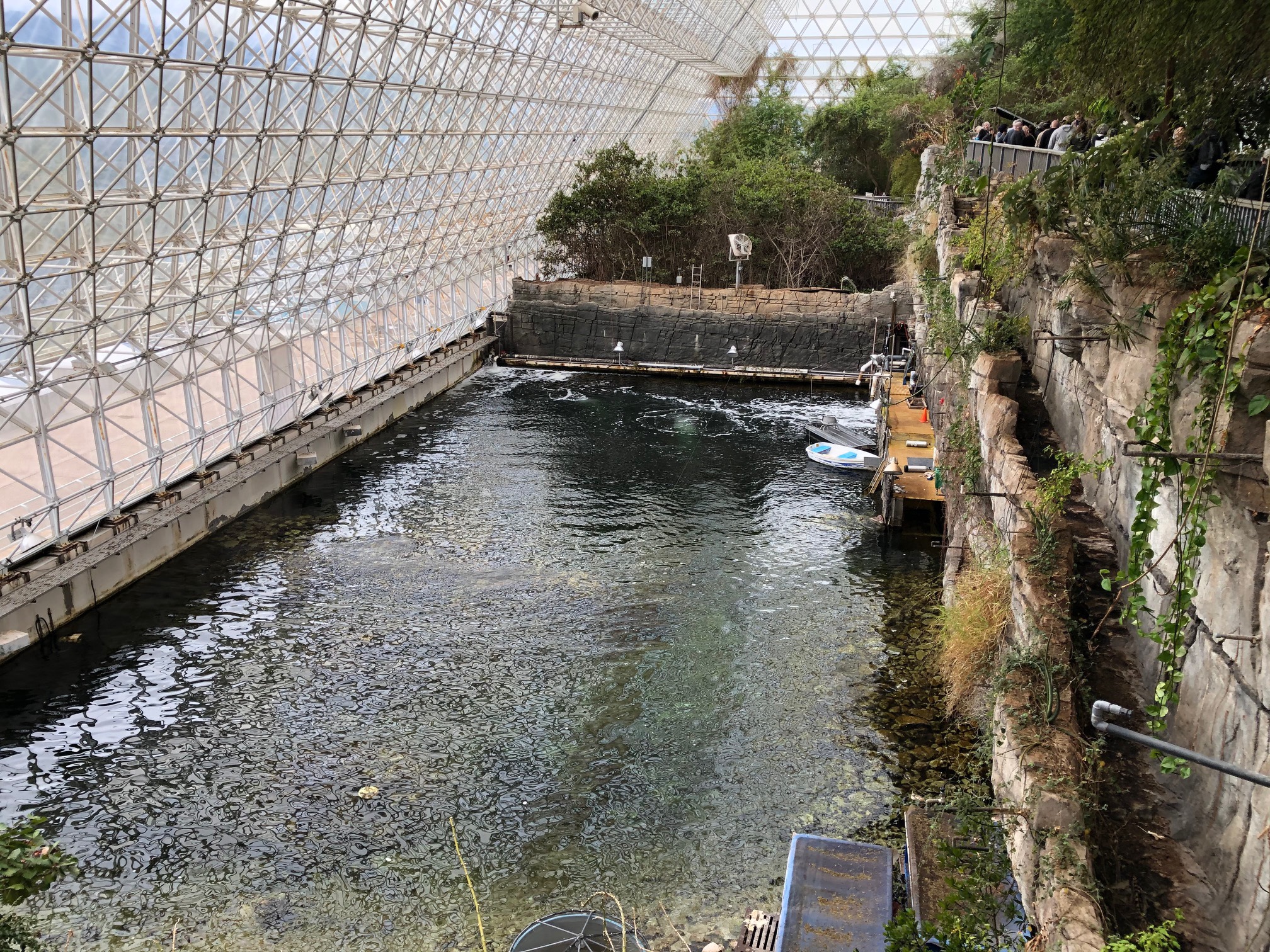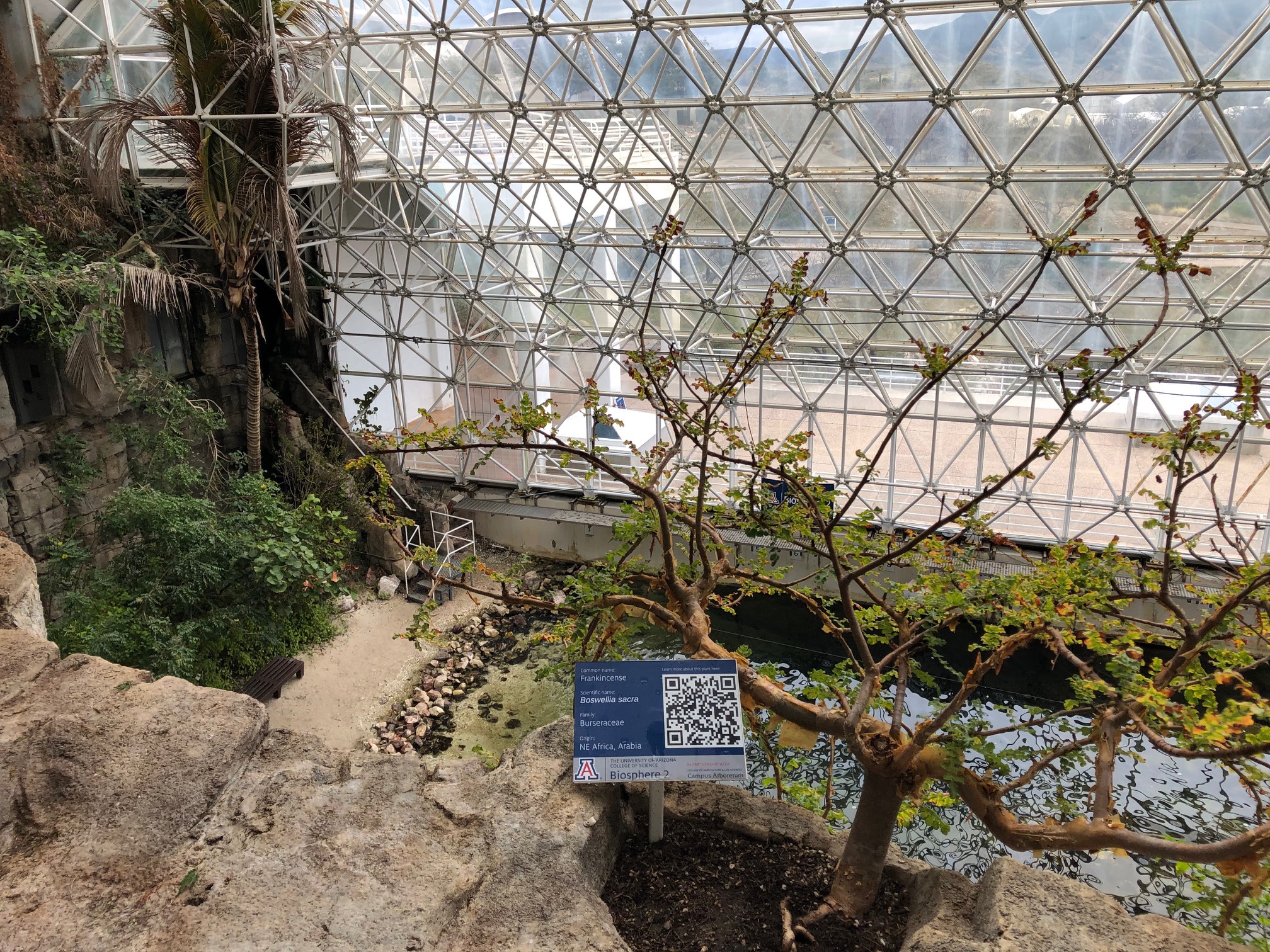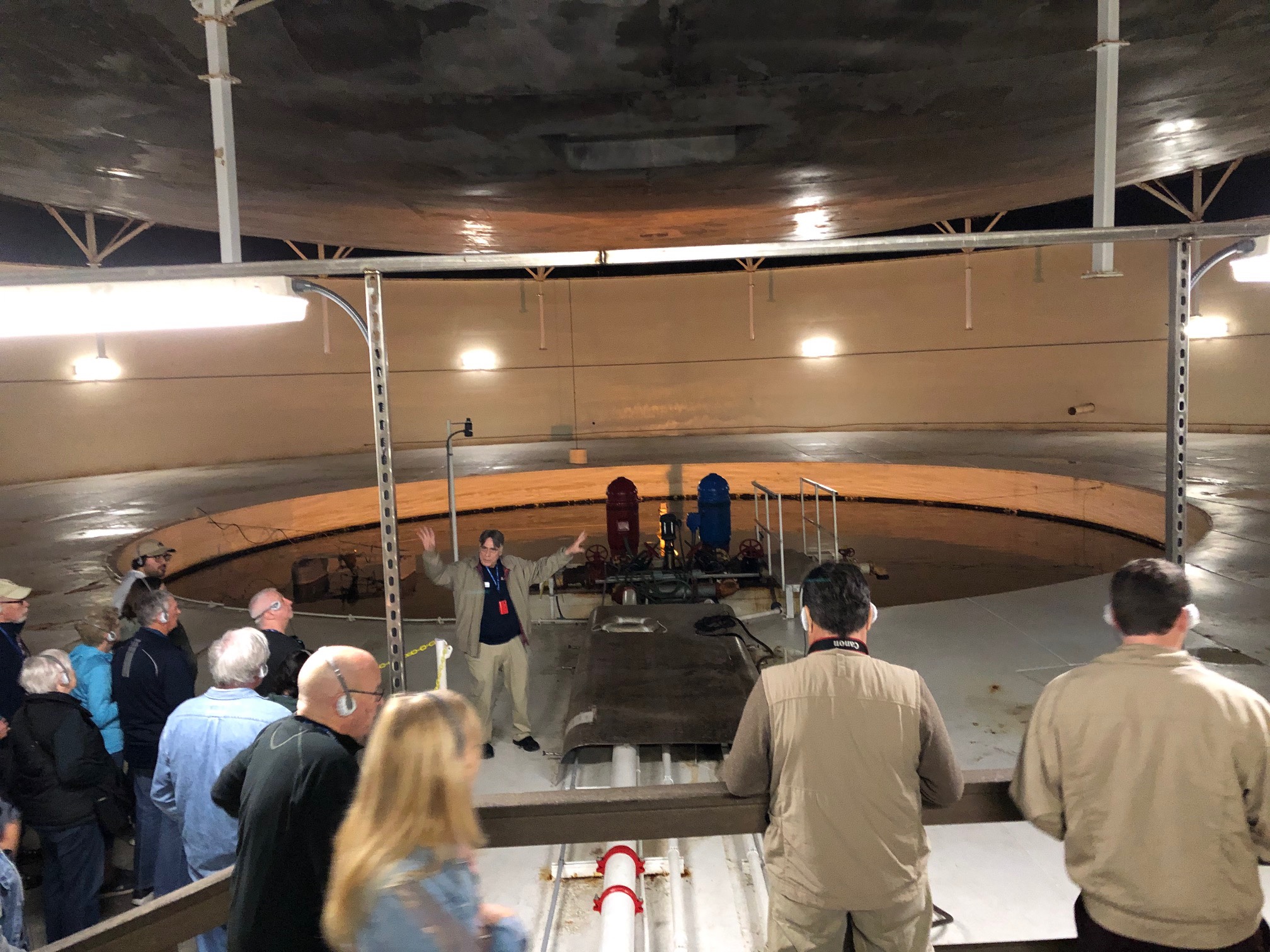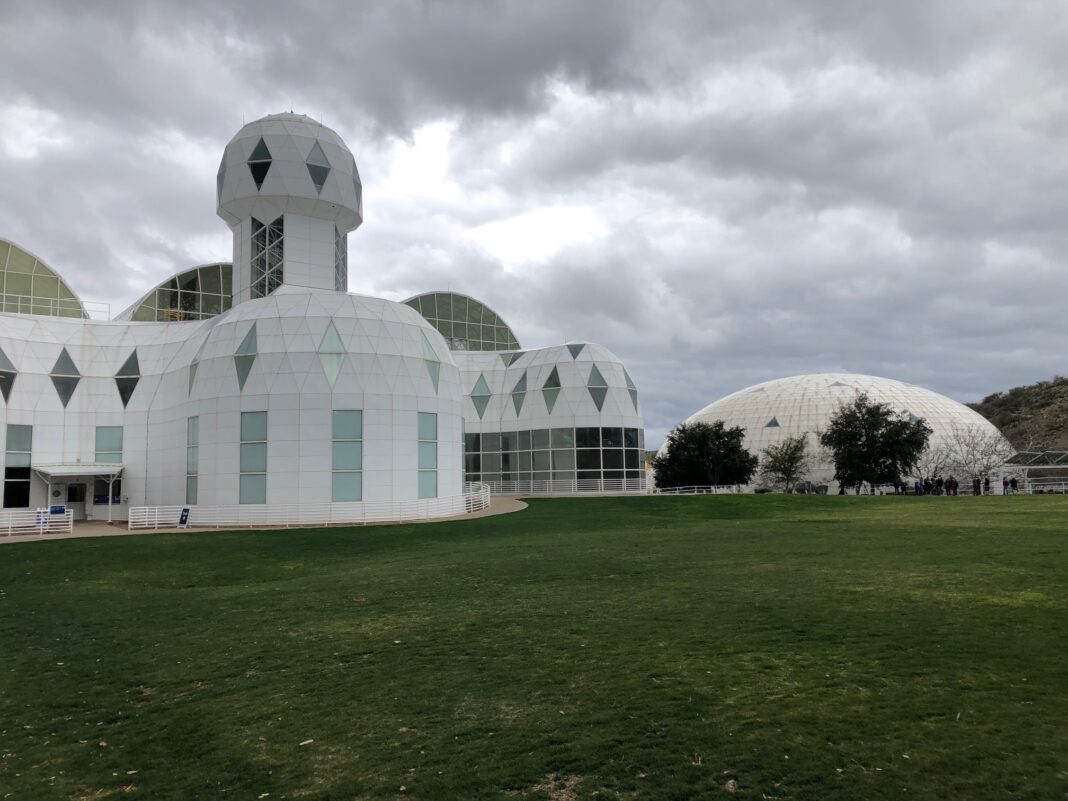Back in 1991 when Biosphere 2 (Biosphere 1 is Earth) was a living and breathing experiment with a small group of scientists and researchers living locked inside of it, visitors could only glimpse the massive white structure from the outside. Now, it is open inside and out for all visitors to get an insider’s look at different climates and ecosystems on earth.

Guests to Biosphere 2 can traverse the more than three-acre site, including the massive structure that once housed the original crew.
The interior space is 20,000-square-feet and includes different distinct biome or community areas – savannah, desert, wetlands, rainforest, and an ocean with a coral reef. Plus, it is a fun look back to see the quarters and living and workspaces where the original group of scientists lived.
Remarkably, back in 1991 through 1993 when the original crew was locked inside, the entire structure was a completely closed system, not affected by the outside world.
Since then, it has been well-publicized that there was a fair amount of drama among the original crew of eight, a lack of oxygen, and distinct challenges of raising their food and existing on a low-calorie diet.
All of these facts are interesting to consider as you travel up and down each area of the glass and metal structure as part of the extensive tour.

Biosphere 2 still serves as a laboratory for scientific studies, an arena for discovery and discussion, and a unique provider of public education. It is now fully owned by the nearby University of Arizona. Visit www.biosphere2.org for more information and tickets.
Some of the more fascinating things to discover and see are the sheer number of plants and trees grown inside that once supported its crew. As you continue with the hour-long tour, you learn interesting facts about the science and technology of the structure, how it was built, how it is being maintained, and how insight gained from the facility may one day help humans live on other planets.
The ocean still plays home to fish and other species and an underwater viewing area located just outside the main building is particularly engaging, especially for kids and young adults. The “air bladder” that helps accommodate the air expansion and retraction inside Biosphere 2 is fascinating to see.
































